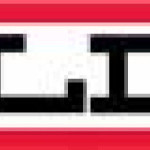- Domeniu: Electrical equipment
- Number of terms: 4774
- Number of blossaries: 0
- Company Profile:
The plate on the outside of the motor describing the motor, HP, voltage, RPM's, efficiency, design, enclosure, etc.
Industry:Electrical equipment
A method for lubricating anti-friction bearings which utilizes oil dispersed on an air stream. The mist is exhausted from the bearing housing so as not to permit oil to accumulate.
Industry:Electrical equipment
Similar to Oil Mist Lubrication - Dry Sump, except that a pool of oil is developed in the bearing chamber. This oil pool will continue to supply oil to the bearing in the event that the oil mist is interrupted and is fed from a source outside the bearing housing such as a constant level oiler.
Industry:Electrical equipment
A ball bearing that does not have a shield, seal or guard on either of the two sides of the bearing casing.
Industry:Electrical equipment
A machine which is ventilated with external air by means of a separate motor-driven blower mounted on machine enclosure.
Industry:Electrical equipment
An open machine except that openings for admission of ventilating air are so arranged that inlet ducts or pipes can be connected to them. Air may be circulated by means integral with machine or by means external to and not a part of the machine. In the latter case, this machine is sometimes known as separately- or force-ventilated machine.
Industry:Electrical equipment
A motor having ventilating openings which permit passage of external cooling air over and around the windings. The term "open machine", when applied to large apparatus without qualification, designates a machine having no restriction to ventilation other than that necessitated by mechanical construction.
Industry:Electrical equipment
An exclusive Reliance bearing and lubricating system which permits complete lubrication of the bearing whether the motor is mounted vertically or horizontally. This system also helps prevent over lubrication which would shorten motor life. An additional benefit to PLS lubrication is cooler running bearings.
Industry:Electrical equipment
When two or more DC motors are required to operate in parallel - that is, to drive a common load while sharing the load equally among all motors - they should have speed-torque characteristics which are identical. The greater the speed droop with load, the easier it becomes to parallel motors successfully. It follows that series motors will operate in parallel easier than any other type. Compound motors, which also have drooping speed characteristics (high regulation), will generally parallel without special circuits or equalization. It may be difficult to operate shunt or stabilized-shunt motors in parallel because of their nearly constant speed characteristics. Modifications to the motor control must sometimes be made before these motors will parallel within satisfactory limits.
Industry:Electrical equipment
Is arranged for starting by first energizing part of the primary winding and subsequently energizing the remainder of this winding in one or more steps. The purpose is to reduce the initial value of the starting current drawn or the starting torque developed by the motor. A standard part winding start induction motor is arranged so that one-half of its primary winding can be energized initially and subsequently the remaining half can be energized, both halves then carrying the same current.
Industry:Electrical equipment
